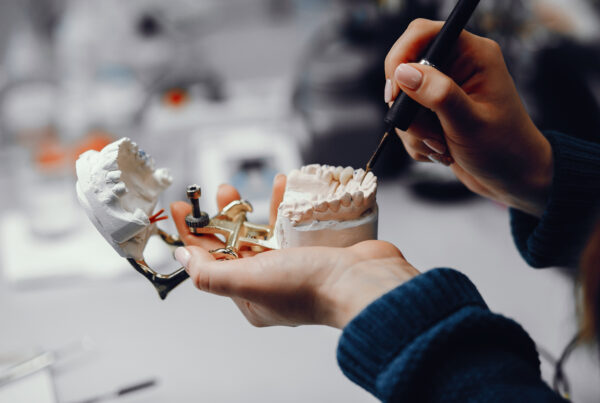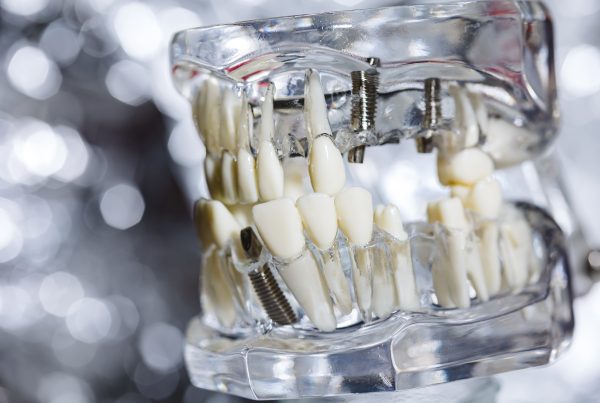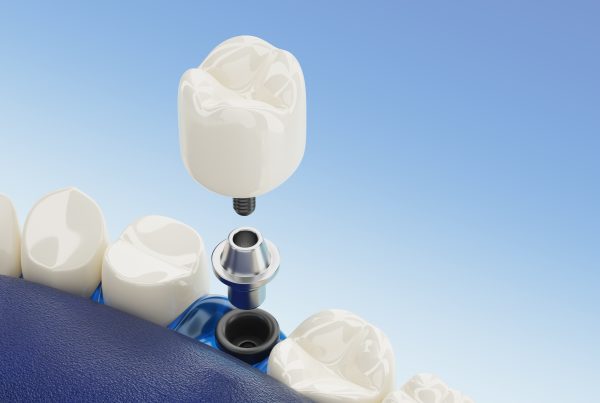A Breakdown Of The Different Healing Stages Of Dental Implant Surgery
Dental implants have revolutionized the field of dentistry by providing a durable and natural-looking solution for individuals with missing teeth. The process of integrating a dental implant into the jaw involves several crucial healing stages that ultimately lead to a strong and functional replacement for a natural tooth. From the initial surgical placement to the osseointegration phase, where the implant fuses with the jawbone, and finally, the attachment of the prosthetic tooth, each stage plays a vital role in ensuring the success and longevity of the dental implant. Understanding these healing stages is essential for both dental professionals and patients, as it allows for informed decision-making and contributes to the overall success of the implant procedure. This article explores the key phases of dental implant healing, shedding light on the intricate process that transforms a titanium post into a stable and functional tooth replacement.

What is the initial surgical placement stage of a dental implant, and what does it entail?
The initial surgical placement stage of a dental implant is a critical step in the overall process of replacing a missing tooth. This procedure typically involves a skilled oral surgeon or periodontist making an incision in the gum tissue to expose the jawbone. Subsequently, a small hole is carefully drilled into the bone to accommodate the titanium implant post. The implant, resembling a small screw, is then precisely inserted into the prepared site. The surgical area is then closed with sutures, initiating the healing process. This stage is crucial for establishing a stable foundation for the dental implant. The success of subsequent phases, such as osseointegration, hinges upon the accurate placement of the implant during this initial surgical step. Patients may experience some post-operative discomfort, swelling, or bruising, but adherence to post-operative care instructions is vital to promote optimal healing and set the stage for the integration of the implant with the surrounding jawbone.
How does the osseointegration phase contribute to the success of a dental implant?
The osseointegration phase is a pivotal aspect of the dental implant process, playing a key role in the long-term success of the implant. This phase typically spans several weeks to months and involves the intimate bonding of the titanium implant with the surrounding jawbone. During osseointegration, bone cells grow and adhere to the implant surface, gradually fusing the artificial tooth root with the natural bone. This biological integration ensures stability, strength, and durability, mimicking the structural support provided by a natural tooth. The extent and quality of osseointegration directly influence the overall success of the dental implant, as a secure bond between the implant and the jawbone is essential for withstanding the forces exerted during chewing and speaking. The meticulous care taken during the osseointegration phase significantly contributes to the implant’s ability to function seamlessly within the oral cavity, providing patients with a reliable and long-lasting solution for tooth replacement.


Can you explain the role of the healing abutment in the dental implant healing stages?
The healing abutment is a crucial component in the dental implant healing stages, serving as an intermediary device between the implanted post and the eventual prosthetic tooth. After the initial surgical placement of the implant and a period of osseointegration, a healing abutment is attached to the implant. This small, temporary structure protrudes through the gum tissue, allowing the surrounding gum to heal properly while shaping it for the future prosthetic tooth. The healing abutment facilitates the development of a natural and esthetically pleasing gum contour around the implant site. It also helps guide the tissue during the healing process, ensuring that the final prosthetic tooth will emerge from the gums with an optimal appearance and alignment. Once the soft tissues have sufficiently healed and matured, the healing abutment is replaced with a permanent abutment, and the prosthetic tooth, such as a crown or bridge, is affixed to it, completing the dental implant restoration.
How long does it typically take for a dental implant to fully heal, from placement to the attachment of the prosthetic tooth?
The timeline for a dental implant to fully heal can vary based on individual factors, including the patient’s overall health, the quality of bone at the implant site, and adherence to post-operative care instructions. In general, the initial healing phase after surgical placement usually takes a few weeks, during which the soft tissues surrounding the implant undergo the initial recovery. The osseointegration process, where the implant fuses with the jawbone, typically takes several weeks to months. This phase is crucial for ensuring the stability and strength of the implant. Once osseointegration is complete, the healing abutment is placed, and the gums need additional time to shape and mature, usually over a few weeks. The entire process, from the initial placement of the implant to the attachment of the prosthetic tooth, often takes several months, ranging from three to six months or more. However, advancements in implant technology and surgical techniques may sometimes allow for expedited timelines, and in some cases, temporary prosthetic teeth may be attached sooner in a carefully managed treatment plan. The precise duration can be determined by the treating dentist or oral surgeon based on the specific circumstances of each patient.

Dental Implant Healing Stages
A Summary Of The Healing Stages Of A Dental Implant
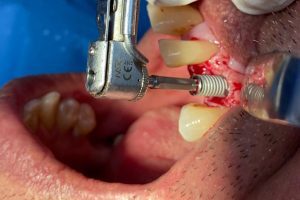
The dental implant healing process begins with the surgical placement of the titanium implant into the jawbone. This involves making an incision in the gum tissue, drilling a hole in the bone, and securing the implant, resembling a small screw, into the prepared site.

Following the surgical placement, a critical phase called osseointegration takes place. Over several weeks to months, the implant fuses with the surrounding jawbone as bone cells grow and adhere to the implant surface. This integration is essential for establishing a strong and stable foundation for the eventual prosthetic tooth.
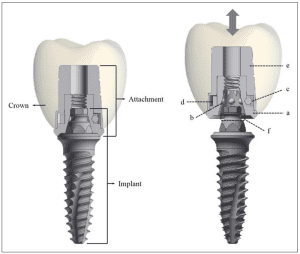
After successful osseointegration, a healing abutment is attached to the implant, allowing the surrounding gum tissue to shape and mature. Once the gums have healed, a permanent abutment is placed, and the prosthetic tooth (such as a crown or bridge) is affixed to the implant, completing the dental implant restoration. The overall healing process, from surgical placement to prosthetic attachment, typically spans several months, providing patients with a durable and natural-looking solution for tooth replacement.

What signs and symptoms should patients be aware of during the healing process, indicating potential issues with the implant?
Patients undergoing the dental implant healing process should be vigilant for certain signs and symptoms that may indicate potential issues with the implant. While some discomfort and mild swelling are normal in the initial days after surgery, persistent or worsening symptoms could be cause for concern. Patients should be aware of:
- Prolonged Pain or Discomfort: While some discomfort is expected initially, persistent or increasing pain beyond the first few days may signal an issue.
- Excessive Swelling or Bruising: While mild swelling and bruising are normal, an unusual or prolonged increase in these symptoms could indicate complications.
- Persistent Bleeding: Excessive or continuous bleeding from the surgical site may be a sign of complications and should be promptly addressed.
- Unusual Redness or Heat: Increased redness and warmth around the implant site may be indicative of inflammation or infection.
- Loosening of the Implant: Any sensation of movement or loosening of the implant, especially after the osseointegration phase, should be reported to the dentist.
- Foul Odor or Taste: An unpleasant odor or taste in the mouth may suggest an infection and should be investigated.
- Difficulty in Chewing or Speaking: Persistent difficulty in using the treated area for chewing or speaking may indicate issues with the implant’s integration or the prosthetic attachment.
Patients experiencing any of these symptoms should promptly contact their dentist or oral surgeon for a thorough evaluation. Early detection and intervention can often mitigate potential problems and contribute to the overall success of the dental implant. Regular follow-up appointments and adherence to post-operative care instructions are essential to monitor and ensure a smooth healing process.

Are there any dietary or lifestyle considerations during the healing stages of a dental implant?
During the healing stages of a dental implant, adopting certain dietary and lifestyle considerations can contribute to a smooth recovery and successful integration of the implant. It is advisable to maintain a balanced and nutritious diet rich in vitamins and minerals that support bone health, such as calcium and vitamin D. Patients are encouraged to avoid excessively hard or crunchy foods that could exert excessive force on the implant site during the initial healing period. Additionally, refraining from smoking is crucial, as tobacco use can significantly impede the healing process and increase the risk of complications.
Regarding alcohol consumption, moderation is key. While moderate alcohol intake is generally acceptable, excessive alcohol consumption can have detrimental effects on the healing process. Alcohol can interfere with the body’s ability to heal, increase the risk of infection, and may negatively impact bone density. Therefore, it’s advisable to limit alcohol intake during the healing stages of a dental implant and follow any specific guidelines provided by the treating dentist or oral surgeon. Patients should consult with their healthcare providers for personalized recommendations based on their overall health and the specifics of their dental implant procedure.

